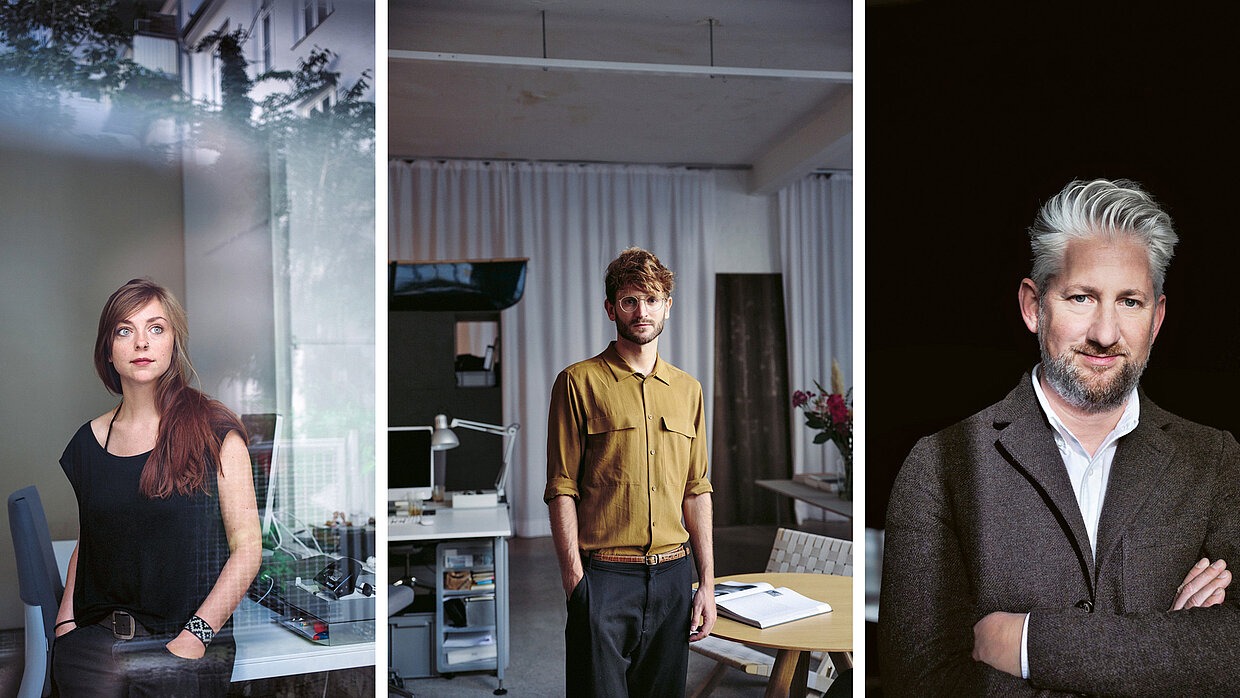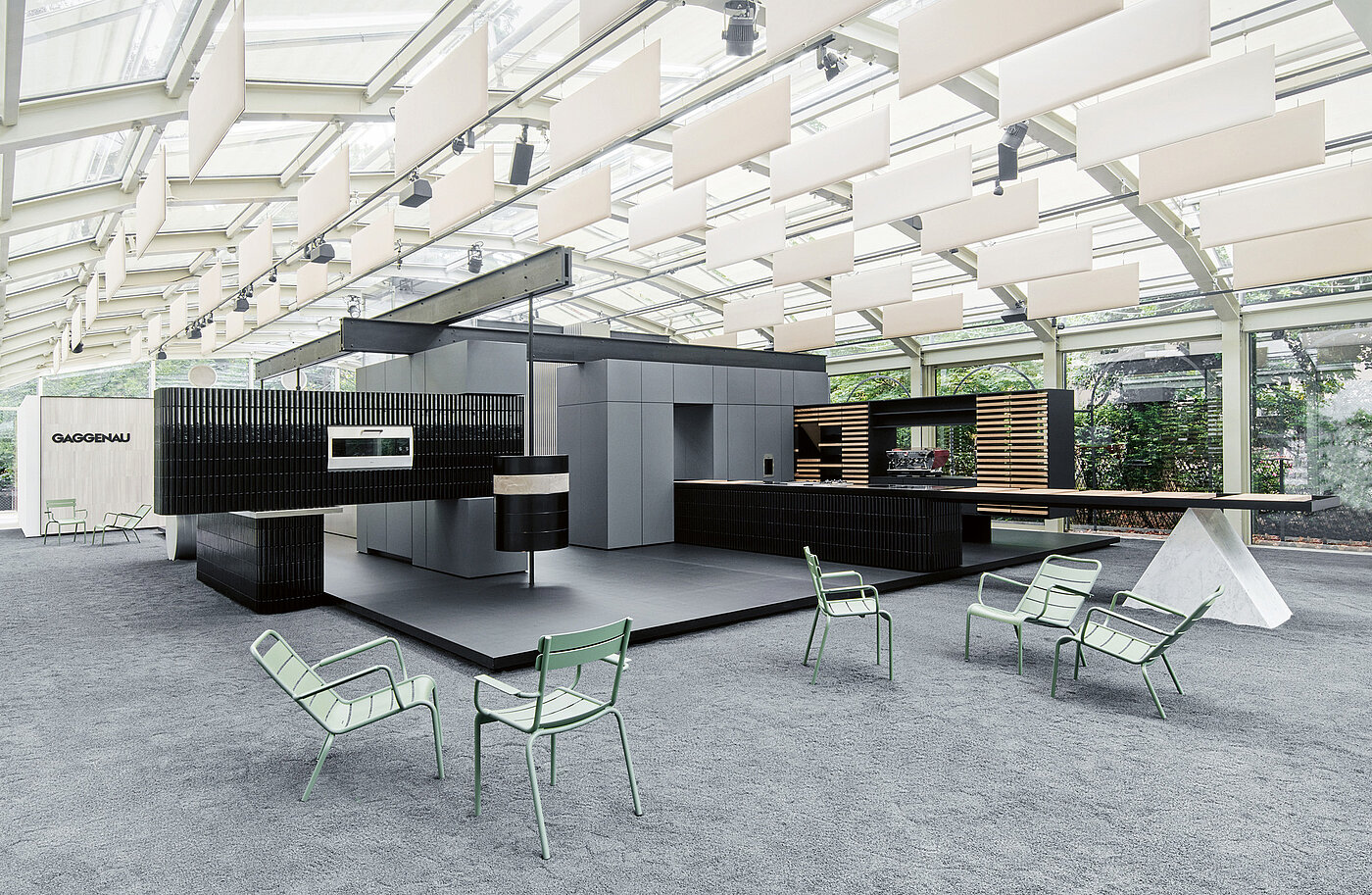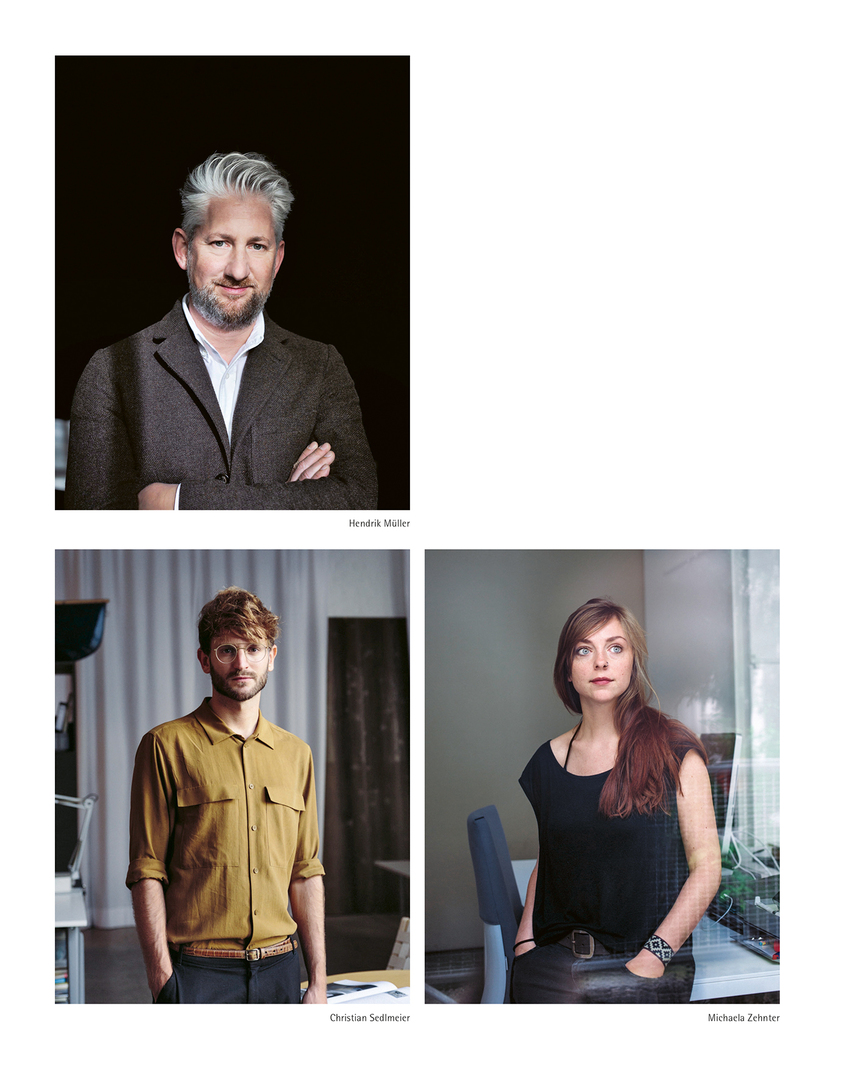
As a studio for architectural brand communication, 1zu33 not only translates corporate values into spaces – it also creates places of encounter where brands can be experienced holistically. For the creative team around the founder Hendrik Müller, the focus is on a structured and targeted creative process: “For us, quality is the common thread that guides us from the concept idea to implementation.” Whether for retail spaces, showrooms, events or trade-fair stands, strong storytelling paired with a keen sense for (sustainable) materials, colours, shapes, lighting and the existing architecture all combine at 1zu33 to create experiential sensory spaces.
In this way, the studio’s passion for details and profound understanding of brands were also manifested in the Gaggenau presentation at the Salone del Mobile. Here, the designers played on the magnificent Villa Necchi, with its 1930s architecture forming an exciting contrast to the modern brand image. “The design ethos of Gaggenau is described by the term ‘traditional avant-garde’ – keeping both facets in balance was the central idea of this concept,” says Hendrik Müller. At a live cooking event with a Michelin chef, guests were invited to engage in this inspiring sensory journey in culinary terms as well – in a fascinating place of brand encounter.
Interview with 1zu33 GmbH
Red Dot: You staged the Gaggenau brand in the Villa Necchi in Milan, with tradition and modernity forming a charming contrast. How difficult was it to interact with this location?
1zu33 GmbH: From the very beginning, it was our intention to treat this location with great respect – yet, nevertheless, to develop a bold and independent approach to presenting the Gaggenau brand. Accordingly, we created a concept in which echoes of 1930s architecture in Italy are combined in an abstract spatial installation with the values and characteristic features of the brand to create a unique composition. Finding the right balance was a very challenging process.
To what extent was the story of the Necchi family inspiring here?
As heirs to a large fortune from the Necchi sewing machine factory, the two sisters Nedda and Gigina were able to lead very independent and free lives. Their elite circle of friends and affinity for the fine arts shaped their lifestyle. Our concept was inspired in particular by the many works of art that can still be seen in the villa today, as well as by the idea of industrial production with reference to the Necchi company, which continues to enjoy renown in the present day.
Which brand values are generally better communicated spatially?
In my opinion, this applies to all values. Experiencing values not only cognitively or intellectually but also physically and emotionally is much more memorable and lasting.
Do we perceive spaces differently today than the generations before us?
Previous generations knew primarily physical spaces and imaginary spaces in their range of experience. The newly introduced digital space creates a fresh and highly relevant dimension, but one that is very limited in its experiential content due to its exclusively visual perceptibility. Our desire to experience real spaces in all their sensory appeal is, in my experience, enhanced by this. We see places in digital space that we want to experience in real life. Often we already carry an image within us that we then compare with reality. We photograph these places and then feed our impressions and observations back into digital space, creating a continuous dialogue between the real and digital planes.

